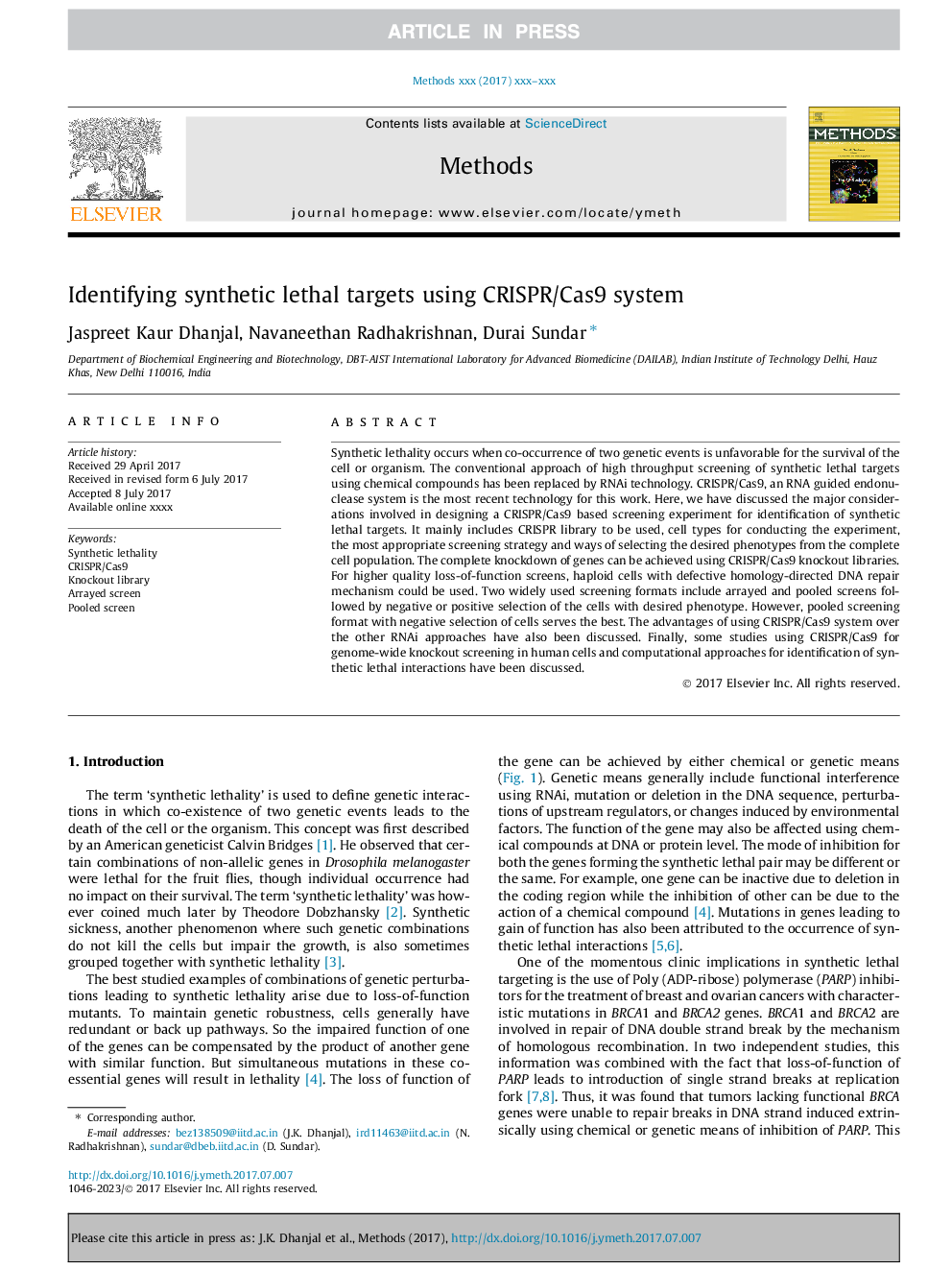| Article ID | Journal | Published Year | Pages | File Type |
|---|---|---|---|---|
| 8340164 | Methods | 2017 | 8 Pages |
Abstract
Synthetic lethality occurs when co-occurrence of two genetic events is unfavorable for the survival of the cell or organism. The conventional approach of high throughput screening of synthetic lethal targets using chemical compounds has been replaced by RNAi technology. CRISPR/Cas9, an RNA guided endonuclease system is the most recent technology for this work. Here, we have discussed the major considerations involved in designing a CRISPR/Cas9 based screening experiment for identification of synthetic lethal targets. It mainly includes CRISPR library to be used, cell types for conducting the experiment, the most appropriate screening strategy and ways of selecting the desired phenotypes from the complete cell population. The complete knockdown of genes can be achieved using CRISPR/Cas9 knockout libraries. For higher quality loss-of-function screens, haploid cells with defective homology-directed DNA repair mechanism could be used. Two widely used screening formats include arrayed and pooled screens followed by negative or positive selection of the cells with desired phenotype. However, pooled screening format with negative selection of cells serves the best. The advantages of using CRISPR/Cas9 system over the other RNAi approaches have also been discussed. Finally, some studies using CRISPR/Cas9 for genome-wide knockout screening in human cells and computational approaches for identification of synthetic lethal interactions have been discussed.
Keywords
Related Topics
Life Sciences
Biochemistry, Genetics and Molecular Biology
Biochemistry
Authors
Jaspreet Kaur Dhanjal, Navaneethan Radhakrishnan, Durai Sundar,
